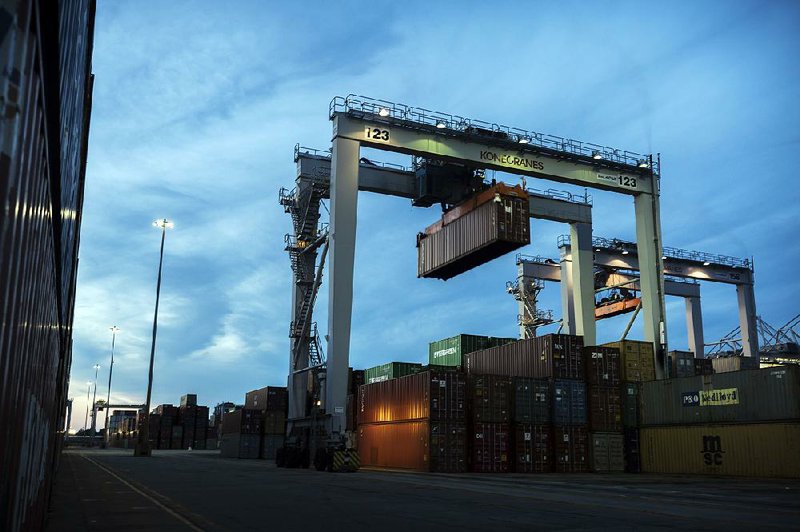WASHINGTON -- Record imports expanded the U.S. trade deficit for the fourth straight month in September, as the politically sensitive trade deficit in goods with China hit a record.
The Commerce Department said Friday that the gap between what America sells and what it buys abroad climbed to $54 billion, up 1.3 percent from $53.3 billion in August and the highest level since February. The median estimate of economists surveyed by Bloomberg called for a deficit of $53.6 billion.
Imports climbed 1.5 percent to a record $266.6 billion, led by an influx of telecommunications equipment and clothing. Exports also rose 1.5 percent to $212.6 billion, led by increases in shipments of civilian aircraft, gold, and petroleum products.
President Donald Trump has made a priority of reducing America's huge, persistent trade deficits. Despite his tariffs on imported steel and aluminum and on Chinese goods, the deficit so far this year is up 10.1 percent to $445.2 billion. The goods deficit with China rose by 4.3 percent in September to a record $40.2 billion.
China and other countries have counterpunched with import taxes on American products. U.S. exports of soybeans, targeted for retaliatory tariffs by China, dropped 29.4 percent in September.
Trump said on Friday that he thinks the U.S. and China will reach a deal to end the ongoing trade dispute and that it would be good for both sides.
Trump, speaking at the White House, added that he will have dinner with Chinese President Xi Jinping at the coming Group of 20 summit in Argentina at the end of this month.
"We'll make a deal with China, and I think it will be a very fair deal for everybody," Trump said before boarding the Marine One helicopter on his way to a campaign rally in West Virginia. The two sides are "getting much closer to doing something" and "a lot of progress has been made."
Trump added that he spoke with President Xi on Thursday and the Chinese "very much want to make a deal."
Trump sees the lopsided trade numbers as a sign of U.S. economic weakness and as the result of bad trade deals and abusive practices by U.S. trading partners, especially China.
Mainstream economists view trade deficits as the result of an economic reality unlikely to yield to changes in trade policy: Americans buy more than they produce, and imports fill the gap. The strong U.S. economy also encourages Americans to buy more foreign products.
U.S. exports are also hurt by the American dollar's role as the world's currency. The dollar is usually in high demand because it is used in so many global transactions. That means the dollar is persistently strong, raising prices of U.S. products and putting American companies at a disadvantage in foreign markets.
In September, the U.S. ran a $23.2 billion surplus in the trade of services such as banking and tourism. But that was offset by a $77.2 billion deficit in the trade of goods such as cellphones and cars.
The monthly report provides details around third-quarter data released last week that showed trade imposed the biggest drag on growth in 33 years amid tariffs on China and counter-levies by the Asian nation. While President Trump is threatening more action, U.S. businesses already are facing higher prices and supply-chain disruptions as they rush to buy materials and other items.
September goods trade deficits with Mexico and Canada both narrowed on an unadjusted basis; the gap with Europe shrank to $10.6 billion from $15.7 billion.
Analysts are monitoring the trade data to assess whether the tariff headwinds are starting to inflict more pain on the economy than they anticipated.
An index of U.S. manufacturing fell by more than forecast to a six-month low in October as a measure of export orders declined to the lowest since 2016, data from the Institute for Supply Management showed Thursday.
The U.S. gross domestic product expanded at a 3.5 percent pace in the July-to-September period, marking the best back-to-back quarters of growth since 2014. Net exports subtracted 1.78 percentage points from GDP growth, reflecting an unwinding of the boost in the prior quarter when U.S. exporters of soybeans and other products stepped up shipments to beat retaliatory tariffs from abroad.
Information for this article was contributed by Paul Wiseman of The Associated Press, and by Shobhana Chandra and Alyza Sebenius of Bloomberg News.
Business on 11/03/2018

